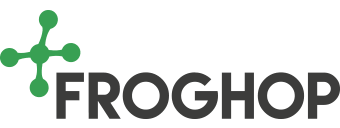Packaging expert Katie Roselaar joined us in the Online Product Development Kitchen session with a wealth of tips for sourcing and selecting the right sustainable packaging options for your products. Packaging has a massive impact on food and drink products. Not only does it play a fundamental role in the stability of a product, it’s often the first touchpoint consumers have with a brand.
Katie runs Innovate to Zero, a packaging innovation consultancy that helps food producers through the process of defining and sourcing packaging, then testing, trialling and making it part of their product. Her speciality is combining food safety and quality with sustainability and cost-effectiveness and he joined us to explain how to tackle the process.
The importance of sustainable packaging options
“All of my clients are asking for sustainability with their packaging. It’s what the retailers are asking for, what the legislation is saying we have to do, so sustainability is always a high priority,” Katie explained.
Katie’s passion for sustainable packaging is complemented by her interest in practical application. She highlighted that the key is finding the right balance and what’s practical, affordable and appropriate to be doing at the stage you’re at. During the presentation, she reminded us that sustainability priorities don’t only have to focus on reducing a carbon footprint. “It could be more important to your brand to fit in with local or national recycling capabilities.”
Getting practical with the process
Katie recognises that getting the packaging aspect of a product right can prove a daunting process: “It is very easy to be overwhelmed with the wealth of packaging options out there, but actually if you take the time to look at your product and what is available, you refine it quite a lot and make it a much more manageable task.”
Her suggestions included:
- Remember the basics. Write down your ideas and sketch out a brief so ideas can be captured and later communicated to potential suppliers
- Look at the market for ideas
- Visualise the kind of packaging you would like – this can be very useful for narrowing down a large list of options
- Be aware that your packaging will evolve in the future
- Get quotes for a low volume and a high volume to further help with the selection process
“Don’t underestimate how long it will take to identify suppliers and obtain quotes,” Katie advises. She suggested that typical timelines for this alone can be up to six weeks. Of course, testing with the new packaging is required too.
The Packaging 101 webinar
If you’d like to find out more, you can watch the complete webinar here. You’ll discover the step-by-step process of packaging, enriched by case studies and practical tips on how to approach suppliers and specify requirements to find the best, most sustainable packaging options for your product and brand.
